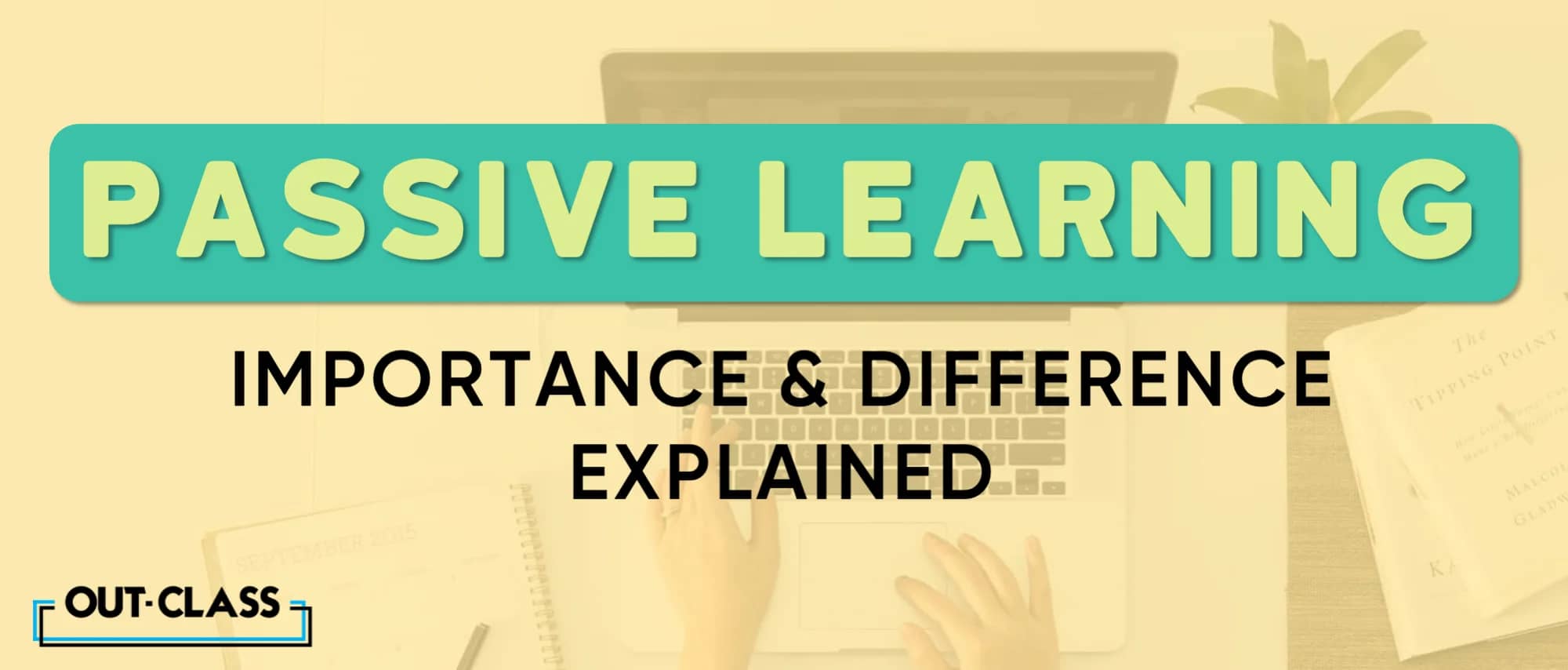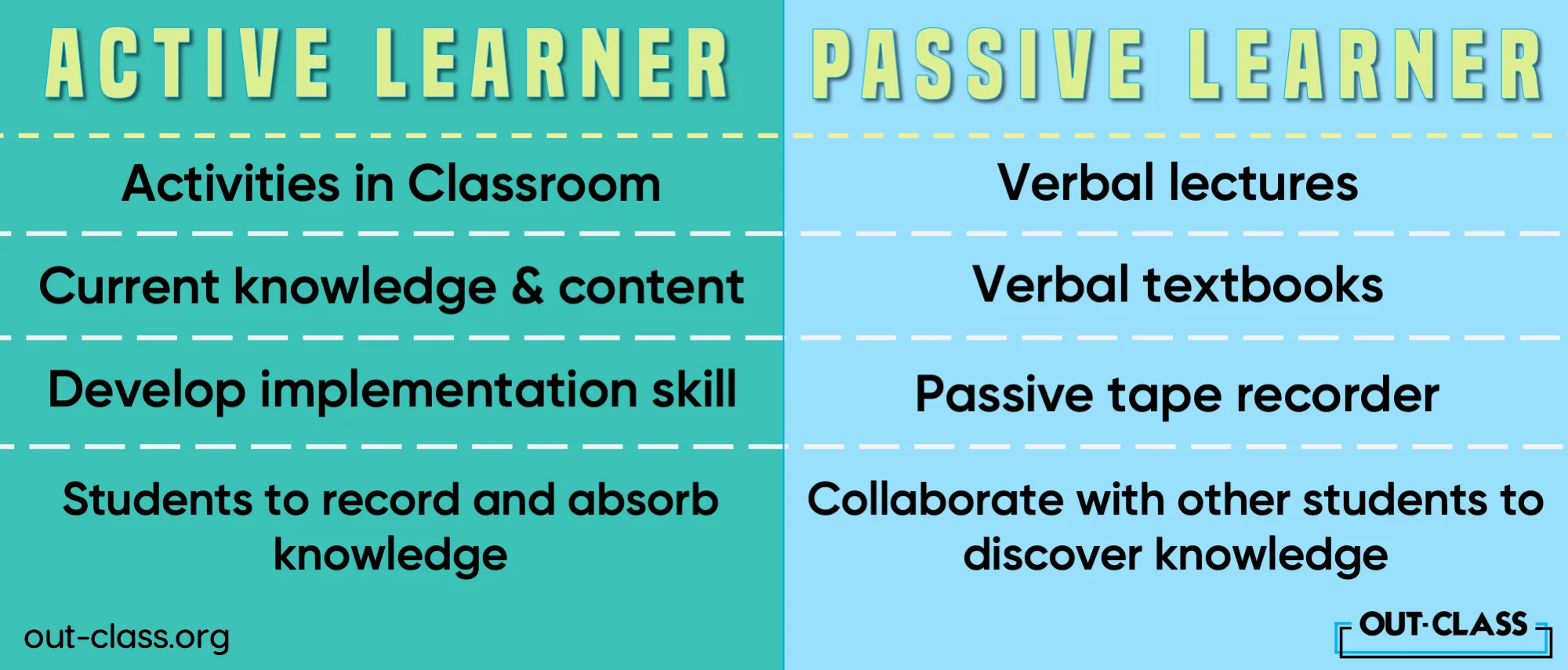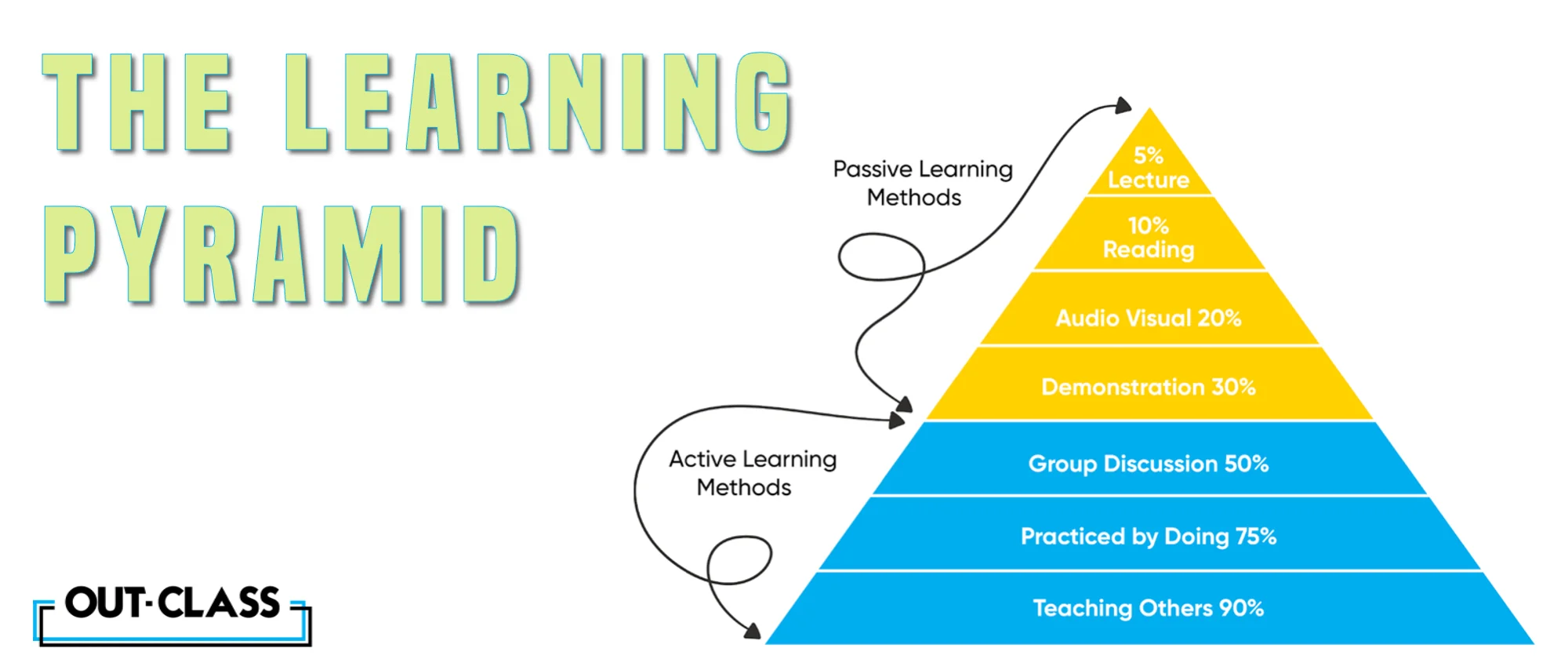Knowing different learning styles is essential - for teachers and instructors, it is so that they can prepare and then account for the individual needs and preferences of each student (active and passive learners); for the students, it is so that they can determine which type of teaching/learning style benefits them the most.
In education, there are two types of learning styles. These are known as active and passive learning. In this article, we will explore these two learning styles, their differences and overall effectiveness.
Active Learning vs Passive Learning
What is Active Learning?
Active learning is when the course material is taught to involve the student through relevant activities and discussions like a two-way street; the teacher helps to provide insight into the subject matter but also encourages students to participate in discussions and provide their interpretation of the concepts learned.
Examples of Active Learning
Examples of active learning include:
- 1-on-1 tutoring
-
Group activities
-
Peer instruction (i.e. when students try to explain the course material to each other)
Benefits of Active Learning
Active learning helps students develop the ability to see the bigger picture and draw connections between what they have learned and the real world. For the tutor or teacher, it allows them to learn more about the level of understanding students have regarding the topic. Other benefits include:
-
Increased critical thinking
-
Increased feedback related to student's comprehension of the material
-
Greater involvement of students in the learning process
-
Increased attention
-
Increased discussions
Disadvantages of Active Learning
-
Can create limitations to the amount of material that can be presented in one session
What is Passive Learning?
Passive learning is the student’s responsibility to absorb and understand the concepts taught in the classroom via a presentation. This can be in the form of a lecture or assigned readings. Normally, students are not meant to engage with the material or participate in the learning process apart from asking questions, paying attention and performing well on tests.
Examples of Passive Learning
A passive learner gets to acquire or learn new information through the following methods:
-
Lectures & Presentations: Here, students are required to pay attention to what their instructor is saying during the video lessons, take notes and ask questions or for assistance whenever needed
-
Pre-recorded Videos: Students learn about a topic at their own pace and convenience (like Out-Class!)
-
Textbooks and Notes: Students read through textbooks and maintain notes and past papers on important topics throughout the class.
- Social Media: Transform your TikTok, Instagram and YouTube feed into an educational powerhouse. It's all about following the right accounts and influencers. Look for accounts and pages that post content related to your curriculum such as IGCSE and O Level subjects.
We’ve got one right here: Out-Class (@outclass_org) • Instagram photos and videos.
Benefits of Passive Learning
Benefits of being a passive learner are:
-
Time-Efficient
-
Accessible
-
Engagement
Why is Passive Learning Important?
While most educationists consider active learning much more effective – due to long-term retention and allowing a deeper understanding of the topic – passive learning is also considered substantially, if not equally, important. When introducing students to a new topic, concept or set of ideas, passive learning can be quite beneficial as it allows students to get a basic understanding of the subject. Other benefits of passive learning include:
-
Time-Efficient: When individuals need a quick topic overview, passive learning offers a timely introduction containing all its salient features.
-
Accessible: Materials needed for passive learning are readily available and can be accessed and consumed at one’s own pace.
-
Engagement: For students who struggle with confidence and speaking in front of a group of people, passive learning offers a safe space for them to learn and understand the concepts being taught without feeling compelled to participate or interact.
Conclusion
In most learning environments, especially ones that require face-to-face interaction, a combination of both active and passive learning approaches ensures better results in terms of comprehension and retention. However, in today’s day and age, where online learning has taken the world by storm, passive learning allows students from all over the globe to acquire knowledge related to virtually any field. Here, at Out-Class, we offer a range of courses in different subjects using easy-to-understand graphics set at a comfortable pace as well as one-on-one premium tutoring to help students who require more attention and more discipline in learning.





